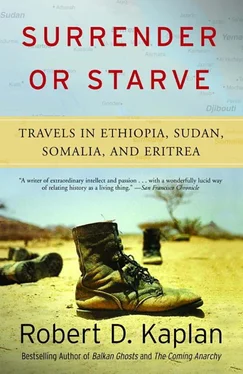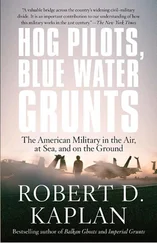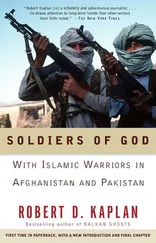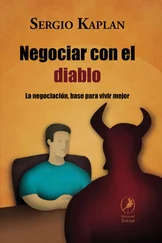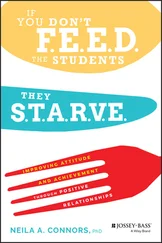But perhaps the most attractive aspect of assisting the EPLF is that unlike the muddled realities of Nicaragua and Angola, the Horn of Africa offers more clearcut distinctions between good and evil, the recent EPLF attacks on food convoys notwithstanding. The 1986 World Human Rights Guide gave Ethiopia the lowest rating of any country in the world. Human rights investigations by the U.S. State Department and Amnesty International turned up similar results. Besides the usual evidence of torture, the murder of children, and unlawful detention common to all the most brutal Third World regimes, the Dergue has been guilty of deliberately denying food to large segments of its population and of collectivizing millions of ethnic Oromos against their will. This is a regime with few defenders in Washington. No serious person, liberal or conservative, would deny that almost anyone would be preferable to the current leaders in Addis Ababa. True, many would say that the regime of Haile Selassie wasn’t all that much better, but lacking the guidance of Eastern bloc security advisers, it was not nearly so lethally competent as the Dergue is in carrying out a policy of repression. In any case, the rule of the emperor, which collapsed in 1974, is not the issue. The issue that needs to be explored is why the United States—while supporting insurgencies in Afghanistan, Angola, Cambodia, and Nicaragua— is not supporting an insurgency in Ethiopia, whose population of 42 million is larger than that of all those other countries combined. Why, as Yonas Deressa, president of the Ethiopian Refugees Education and Relief Foundation, has asked, is the United States allowing the Brezhnev Doctrine to be implemented in the Horn of Africa rather than the Reagan Doctrine?
The ready answer offered by officials at the U.S. State Department and National Security Council is that the Eritrean guerrillas “are Marxists just like the Dergue” and thus cannot qualify for U.S. military support. Interested members of Congress, such as Senator Orrin Hatch, the vice chairperson for foreign policy on the Senate Republican Steering Committee, also have branded the EPLF with the “Marxist” label. In an editorial column in The Wall Street Journal (April 4, 1986), Hatch recommended that because the EPLF is “Marxist-oriented,” and wants “to secede from the country,” the United States should fix its hopes instead on the “non-communist, non-secessionist” Ethiopian People’s Democratic Alliance (EPDA).
The use of the verb “secede” is questionable in this context, given that the region in question has been largely outside the Ethiopian government’s control for a quarter century already and for a decade before that was officially declared “autonomous.” More to the point, notwithstanding the democratic virtues of the EPDA, its army is small, and its role in fighting the Dergue is marginal compared to that of the EPLF, or even that of the TPLF. The EPDA is simply not a viable substitute for the Eritrean guerrillas in the task of destabilizing a regime that Moscow has built into its most powerful ally on the African continent. But Hatch and others won’t even consider helping the EPLF because it is “Marxist.”
Responding to these charges, Isaias Afewerki, the number two man in the EPLF hierarchy after Ramadan Mohamed Nur— but reputedly the real power in the organization—told me that “we totally reject any labeling from any quarter. We have our own realities and we begin from there to solve our social and political problems. We are a broad democratic front struggling for national liberation. A national liberation struggle cannot be a Marxist struggle since it must accommodate all viewpoints.” It was the same answer that he and Ramadan Nur had given to the handful of other journalists, almost all European, who had interviewed them. Unlike leaders of the Palestine Liberation Organization, EPLF leaders have no record of backtracking or contradicting themselves. Nevertheless, the EPLF cannot deny that it has a Leninist command structure, with its leadership organized around a “politburo” and a “central committee.” Afewerki admitted that in its early stages, the EPLF was influenced heavily by Soviet literature, which was a reaction against Western colonialism in Africa. Such terminology “was all we knew,” he claimed. Concerning the United States, Afewerki said “the standing of America here has always been positive. The food aid to Eritrea is what we expected from a people of noble ideas, and whatever the motives of the U.S. government in giving the aid, the fact is we have really benefited from it.” However, he is bitter about the U.S. refusal to recognize Eritrea as separate from the rest of Ethiopia.
Afewerki, said to be in his later thirties (he says he does not know his exact age), met me in a protected veranda furnished with broken furniture at the EPLF command outpost of She’eb, three hours by Land Cruiser southeast of Orotta. The interview was scheduled for 10 a.m. on October 15, 1986. At ten exactly, he arrived on foot with no escort, dressed in a khaki safari shirt and blue jeans. With short black hair, a clipped moustache, and a cold, authoritative style of speech, Afewerki affected a military disposition.
Was he leveling with me about the EPLF’s non-Marxist orientation? There is no action that the EPLF has taken within the area under its control that would suggest otherwise. The most left-wing concepts ever pushed by the organization’s economic department were a mild land reform program, designed to narrow the gap between peasants and a few rich merchants, and aid to rudimentary worker organizations. Moreover, EPLF officials did not evince the coercive manner of approach to the civilian population that is so apparent in all communist societies. While in Addis Ababa, one often hears phrases like, “This is what we’re going to do” ; in Eritrea, it is more common for someone in authority to ask, “How do we convince people to do it?” Marxism, or capitalism for that matter, is simply not the issue in Eritrea. In a place with no heavy industry, no circulating currency, and only a rudimentary class structure, such terms have far less relevance than they do in Washington. The ideology I’ve heard professed by Eritreans is so vague that it seems little more than a form of the social contract theory developed by Jean-Jacques Rousseau in the eighteenth century.
In addition, after the experience of being bombed for a decade by a Soviet-supplied air force, Eritrean dislike of the Soviet Union is comparable with that of the Afghans. Moscow is constantly being condemned by Eritreans at all levels of society, from field commanders to peasant women. Amputees sometimes are referred to as “Mr. Gorbachev’s work.” The depth of hostility toward the Eastern bloc was made clear to me on my second journey into Eritrea (October 1986) at an ERA service station in the heart of Sudan’s Tokar desert, where vehicles transporting grain from Port Sudan to Orotta were repaired. Due to the combination of a flat tire, reports of flooding further on, and the fear of being attacked by MIGs if caught on the road in daylight, I was held up there for seventeen hours. There were no toilets, nothing to eat, and only a few containers of expired Turkish mineral water to drink. Therefore, it was a pleasant surprise when a young Eritrean entered my hut and asked me if I wanted to watch a video. He led me to a clearing between a water tanker and a refuse heap where about two hundred people, many of them children, were seated on makeshift benches before a VHS unit hooked up to a generator. It was an EPLF propaganda film. After the usual scenes of marching soldiers, the camera switched to a ceremony where Ethiopian leader Mengistu Haile Mariam was smiling and shaking hands with the then-Soviet foreign minister Andrei Gromyko. At the sight of Gromyko, there was a distinct hiss from the audience, which grew more audible as the camera focused closer on the Soviet official’s chiseled and stony face. The looks of burning hatred registered by some of the older children would have made President Reagan’s eyes water, had he been able to visit this desert hovel. In a continent infected with a double standard on nonalignment, it seemed that these people were drawing the proper distinctions.
Читать дальше
